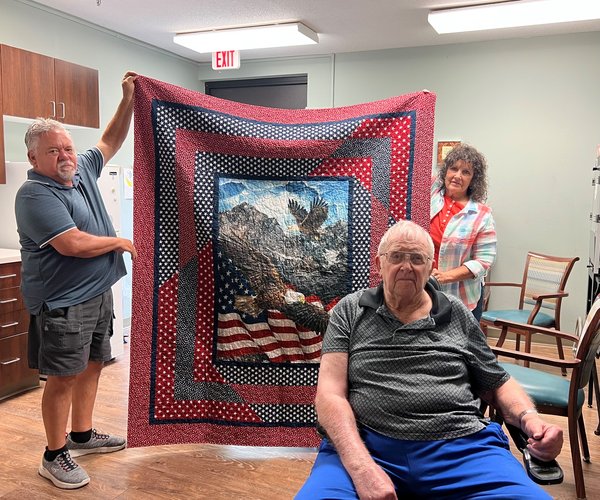Response was swift in Barton County to a 911 system outage that impacted a large swath of southern Kansas Sunday afternoon.
A roughly three-hour outage of the southern portions of the state’s next-generation 911 (NG911) system left many counties, including Barton County, unable to log into the system. The outage began a little after 1:30 p.m. Sunday, and service was restored statewide around 4:40 p.m.
Dispatchers in Barton County first noticed the outage at approximately 1:37 p.m. Sunday afternoon when a 911 call came into the Barton County Communications Center, and the dispatcher was unable to pick up the call, despite seeing the information on the screen. Other dispatchers in the office tried to answer the call, and each attempt failed, prompting the system to lock up.
According to Scott Ekberg, Kansas NG911 Administrator with the Kansas 911 Coordinating Council, who oversees the state’s next-generation 911 system, the group is still running an in-depth cause analysis to determine exactly what caused the widespread outage. The initial signs, he said, point to some type of software issue, but it could take several days to definitively determine the root cause, and he did not want to speculate prior to the analysis being completed.
More information would be released, he said, once a cause for the outage was determined.
As local dispatchers investigated the issue, they began receiving word that other 911 centers in the area were also experiencing similar problems. They were unable to reach AT&T, a major vendor for the state’s 911 system, due to the widespread nature of the outage.
The Communications Center was able to then make contact with the Kansas 911 Coordinating Council, which encompasses all but nine counties in the state of Kansas. The council then coordinated resolution efforts with AT&T across all affected counties. The council also helped individual counties connect with one another to handle emergency calls coming in, through what was called a bridge.
Fail-safes and Barton County’s response
Barton County 911 Communications Director Dena Popp stressed to residents every call placed to Barton County 911 during the outage was addressed and dispatched as necessary.
According to Popp, the bridge set up by the Kansas Coordinating Council was a crucial part of the response to the widespread outage, because of fail-safes built in to the state’s 911 system.
The state’s 911 system is set up, according to Popp, so that if one agency is unable to answer a 911 call, either due to an outage, staffing issues, or being inundated with calls, the call will then automatically route to another county’s agency that can accept the call after a certain number of rings. That information is then relayed back to the impacted county through various means to ensure calls are responded to. This is called each agency’s contingency plan.
For Barton County, this means if they are unable to take a call, calls are routed first to Rice County, then Pawnee, Russell, and finally Ellis counties, respectively. In this case, because Rice and Pawnee counties were also impacted in Sunday’s outage, many of the calls coming into Barton County’s dispatch wound up routed to Russell County, though she said a few calls went to Sedgwick County, where the outage was more sporadic.
The state’s system is set up on two different hosts, divided north and south, roughly along I-70, according to Popp. It was the south host that failed Sunday, Popp said. Pawnee and Rice counties also fall on the south host, and Russell and Ellis counties are on the north host, which was not impacted by the outage.
This split hosting system is what allowed calls to Barton County to be answered by Russell County through the process of the outage.
In each case when affected calls went to other counties, the information was relayed back to Barton County either through a computer generated message system called teletype, or via the bridge set up through the Kansas Coordinating Council.
In each case, when call information was received from other counties, dispatchers would follow up with callers through alternate means, including personal cell phones when necessary, to ensure all calls were being responded to.
In some cases, Popp said, dispatchers could see the numbers coming in on their screens, but were unable to answer call because the phone lines would not connect. In those cases also, she said, dispatchers took down information and promptly called those numbers to ensure a response to each call.
An additional fail-safe employed during Sunday’s outage was the use of an internet-based phone brought over from the Barton County Courthouse and plugged in at the Communications Center. Calls could be routed temporarily to this phone through an alternate number. The Communications Center posted this number to the county’s social media platforms for residents to contact for emergencies until service could be restored Sunday. This phone was also employed for about an hour Sunday in response to the outage.
The one challenge to this step, she said, is that the phone must be physically brought over from the courthouse, and during the week it is actively in use in that building, so it takes extra time to set up.
One system which was not impacted by the outage was the county’s Text-to-911 system, which allows residents to contact 911 via wireless text message, which remained functional throughout the outage.
She said when the system came back up, dispatchers also went through the call logs for the period of the outage and called every number that had come in, including calls which had been routed to other counties through the contingency plan, to ensure the call had been properly addressed and dispatched.





